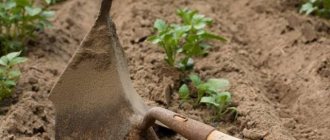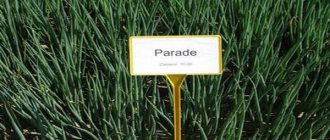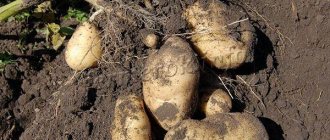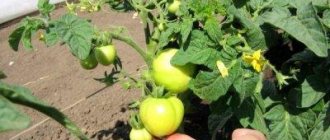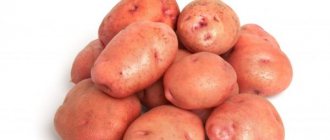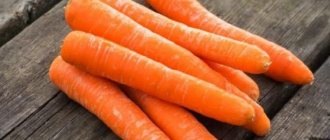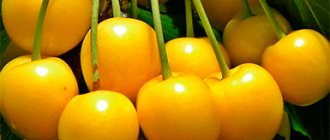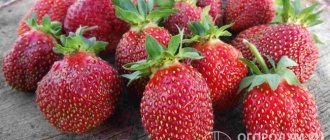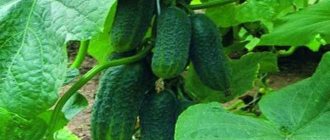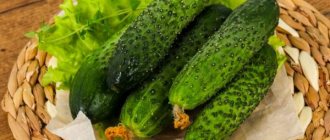Strawberries or strawberries?
In Russia, garden strawberries are used to being called strawberries, although this is incorrect. Both plants - strawberries and wild strawberries - belong to the genus Strawberry (Fragaria, i.e. “fragrant”). Growing in the forest, with small scarlet berries, these are forest strawberries, and the ones that we are used to seeing in summer cottages, it turns out, are also strawberries, but “garden” or “pineapple”. Real strawberries - also known as nutmeg strawberries - are much less common: they grow wild in southern Russia and Central Asia.
Therefore, the giant - up to 160 grams in weight - berry with the beautiful name Chamora Turusi (aka Kurusi, aka Turush), which can be found in the garden of an amateur or professional gardener, is exactly a garden strawberry, not a strawberry. As, indeed, are most of its related varieties.
Chamora Turusi - large, sweet, but very demanding garden strawberry
Main characteristics
We summarize some of the main characteristics in the table:
| Parameter | Characteristic |
| Culture | Strawberries |
| Ripening period | Mid-late or late |
| Fruiting | One-time (non-repairable), long-term, extended |
| Photoperiodic type | Short daylight hours |
| Productivity | Up to 250 c/ha, on average - 1.2-1.5 kg per bush, maximum - up to 3 kg |
| Mass of berries | Average 40-80 g, maximum up to 110-150 g |
| Fruit shape | Round, conical, comb-shaped, with folds and irregularities |
| Berry color | Bright red with a dark (crimson or terracotta) tint |
| Pulp | Red, juicy, dense, fleshy |
| Tasting assessment | 4.5 points (out of 5) |
| Purpose | Universal |
| Educational ability | High |
| Sustainability | The variety is winter-hardy; heat and drought resistance is weak; moderately resistant to fungal diseases of leaves and gray rot of fruits, pest damage |
| Productive life cycle | Up to 10-12 years (depending on climatic conditions and intensity of agricultural technology) |
| Inclusion in the State Register of the Russian Federation | Turned off |
Chamora Turusi: all about the variety
There is no official version of where and how the variety was bred in the botanical literature, but there are several legends about Chamora Turusi. One says that the variety was imported from Japan, although the Japanese themselves do not confirm this. There is also an assumption that the Chamora Turusi garden strawberry is a hybrid of the Gigantella Maxim or Queen Elizabeth variety.
Productivity and ripening time
The first berries can be tasted in mid-June (15th–20th), and mass harvesting begins within a week or two (around the end of the month). The period of fruiting depends on the care of the plant during this period.
Chamora Turusi reaches unprecedented sizes: the size of the berries of this variety is comparable to a chicken egg or a small apple.
The fertility of the variety is amazing: up to 3 kilograms (on average 1.2 kilograms) of selected berries are harvested from one bush. Of course, in certain periods and with proper care. For example, in the first year it is not recommended to allow garden strawberries to bear fruit - to do this, flowers and peduncles are removed. But the second and third years will delight the gardener with an unprecedented harvest (those same 3 kilograms of berries weighing 100–150 grams each). After this, the quantity and quality of the berries will decline, the weight will drop to 80–100 grams, although in fact, Chamora Turusi can bear fruit in one place for up to twelve years. Then you will need to replant into undepleted soil.
Description of Chamora Turusi strawberries
The Chamora Turusi bush is tall, with a spreading powerful “crown”, long thick mustaches and bright green leaves. The berries, as already mentioned, are large, resembling the size of small apples, round-conical, often folded, dark scarlet with a brown tint. In the middle and end of the harvest period, the smell becomes especially intense.
Table: pros and cons of the Japanese strawberry variety Chamora Turusi
| pros | Minuses |
| It has large fruits with tasty pulp and an attractive aroma. | Sensitive to watering: if there is an excess of moisture, it will rot; if there is not enough moisture, the fruits will be sweet, but rather dry |
| Not susceptible to powdery mildew | Often suffers from verticillium, gray mold, brown and white spots |
| Tolerates frost well | “Afraid” of ticks and slugs |
| It grows and bears fruit in one place for many years in a row. | A powerful root system attracts moles |
| Not very picky about fertilizing | Demanding on soil composition |
| Has strong fruits that are well preserved and transported | Requires a large area for planting |
Features of this variety
- Experienced gardeners recommend not waiting 5-6 years, but updating the variety every 3-4 years. Already in the 3rd year, you can notice a slight shredding of the berries and a decrease in yield. Such changes will not be noticeable to amateur gardeners, but a professional eye will notice them easily.
- With a lack of moisture, the berries stop gaining weight. Moreover, the berry bakes in the sun, becomes hollow inside and loses all its juiciness. But it is worth noting that the taste remains attractive.
- If there is excess moisture, the berry becomes watery, loses its sweetness and begins to rot.
- The plant loves nutritious and light soil. In addition, it is very responsive to feeding. However, it is worth noting that an excess of nitrogen is detrimental to the crop. The bushes in such conditions will be like natives of the jungle, but there will be no harvest at all. A couple of berries, on a “strawberry tree” and that’s all.
Planting and caring for Chamora Turusi
Compliance with the rules of agricultural technology is the key to obtaining high-quality strawberry bushes and high yields.
Site selection and soil preparation
Chamora Turusi loves well-lit, spacious areas, while being reliably protected from the winds. A good solution would be to plant it in an open area between hedges.
For full development, the variety requires light and fertile soil with a large proportion of chernozem and fertilizing with mineral fertilizer of the potassium-phosphorus group (simple and double superphosphate, potassium salt, potassium carbonate, bone meal). An excess of nitrogen-containing substances in the soil will destroy Chamora Turusi, provoking fungal diseases in plants. Strawberries love fertilizing with mullein and chicken droppings. If mullein is used, it is distributed between plantings (no more than 3 kilograms per square meter): over the winter it will rot and become a source of nitrogen; mullein is also placed in holes before planting. Chicken manure is diluted lightly and the soil is spilled not at the root, but next to the root rosette.
Boarding pattern and time
The minimum distance at which holes are made for planting this variety is 40 centimeters; It is best to use a 40 x 60 centimeter pattern. If you thicken the plantings too much, the yield and quality of the berries will decrease: the powerful root system simply does not have enough nutrition.
By the way, the “crown” of an adult plant reaches half a meter in diameter, and this is also an argument in favor of giving the variety more territory.
The holes are made up to 15 centimeters deep. A small mound is formed at the bottom, and the plant is carefully lowered onto it. Next, you should straighten the root system and sprinkle it with soil.
Planting time will be different for climatic regions: in the middle zone, for example, it is the end of August, and in warm regions with little snow winters - the end of spring.
Watering, processing and fertilizing
It is not advisable to apply fertilizer frequently. Since the variety requires the development of a powerful crown, excessive feeding will lead to leaf growth to the detriment of fruiting. By the way, these same wide, powerful leaf plates force us to water Chamora Turusi more often than other types of garden strawberries, since they evaporate moisture at a fantastic rate. It is better to use a drip irrigation system, which will maintain the required level of humidity without allowing the plant to rot or dry out.
If there is an excess of moisture in the soil, the berries become less tasty: their sugar content decreases and the strawberries become watery. Lack of moisture, on the contrary, makes the fruits sweeter, but their appearance becomes unpresentable.
Chamora Turusi should be fed according to the following scheme.
Table: feeding scheme for Chamora Turusi strawberries
| Time | Treatment |
| When planting in the soil | Fertilizers of the potassium-phosphorus group (simple and double superphosphate, potassium salt, potassium carbonate, bone meal) |
| When flowering | Treatment with Actofit (4 - 6 ml per 1 liter of water) |
| Before fruiting | Treatment with fungicides (Horus - dissolve 6 g of the drug in 5 liters of water) |
| When ovaries appear | Treatment with Actofit (4 - 6 ml per 1 liter of water) |
| After fruiting | Treatment with fungicides and Actofit |
You should be careful with natural fertilizers (for example, manure): their excess will also lead to the development of fungal diseases.
Mulching bushes
This variety of strawberry requires soil mulching, for example, with wood chips. During the fruiting period, the berries sink closer to the soil under their own weight and may rot. Mulch will prevent this from happening. But it needs to be laid in the summer, because in the spring the earth should warm up well.
The soil under strawberries can be mulched with wood chips, sawdust or pine needles
Landing
When planting seedlings, you need to proceed as follows:
- Choose a light area, preferably elevated; swampy and saline soils are not suitable.
- Loosen the soil thoroughly and add humus or other organic fertilizer to it.
- Plant bushes at the rate of 4 plants per 1 square meter. m, making holes 12-15 cm deep.
- If the seedlings do not seem to be of very high quality, it is necessary to treat the roots with Radifarm solution so that the bushes are guaranteed to take root.
Methods of propagation of garden strawberries Chamora Turusi
To propagate the variety, gardeners use three methods:
- using a mustache;
- seeds;
- dividing the bush.
Reproduction by antennae
The best (that is, the strongest and most able to survive) tendrils are taken from the first rosettes of adult plants. When a young bush takes root, it is transplanted into a small container with good fertile soil and watered so that water appears in the tray under the container. They are planted in the ground together with the same lump of earth: this way the plant will experience less stress.
Growing from seeds
The most labor-intensive method of growing Chamora Turusi, which is perhaps only suitable for experienced gardeners. In this case, you need to plant strawberries in early spring.
- Plastic containers are filled with fertile soil.
- Without burying, strawberry seeds are left on the surface of the soil and sprinkled with a layer of snow.
- The container is closed and put in the refrigerator for two weeks, after which it is kept at room temperature and good lighting for another week and a half.
- After germination, the container is opened and watered as the soil dries.
- Diving is done when the plant has two leaves.
- Planted in open ground when the threat of frost returns disappears. Usually by this time the plant already has three pairs of leaves.
This method is difficult, but it is good because it allows you to grow Chamora Turusi without fungal diseases acquired from the mother plant.
Transplanting bushes
Dividing bushes is perfect for plants with a powerful, tenacious root system, and therefore for our variety. To do this, select the strongest plants, dig them up and use a sharp knife to separate them so that the so-called hearts remain on both halves. After this, the shoot is planted in soil similar in composition to that in which the mother plant developed, watered and fed.
How and when to plant - recommendations for summer residents
It is the correct planting process that will allow you to obtain a high and high-quality harvest.
Landing dates
Planting work can be carried out both in spring and autumn. The time between April 15 and May 5 is considered suitable. If summer-autumn planting is chosen, then seedlings must be sent into open ground from July 25 to September 5. Planted plants do not always have time to form tendrils and grow stronger before the onset of cold weather.
Planting scheme
Since strawberry seedlings Black Prince and Chamora Turusi are characterized by active shoot growth. Thus, when planting, it is necessary to use a 50x50 cm pattern. If there is enough space in the garden, then the interval can be increased to 60 cm. There should be no more than 4 bushes per 1 m2.
The video shows the correct planting of strawberries:
If the planting is too dense, the plants will become intertwined and it will become difficult to care for them. The landing process boils down to the following action plan:
- Make holes, the depth of which must correspond to the size of the root system.
- Moisten the soil.
- Place prepared seedlings containing 3-4 leaves in a hole. At the same time, lightly press down the roots and sprinkle with soil. The central bud should be at soil level.
Planting activities are best carried out in the evening or in cloudy weather.
It will be useful to know how soda is used for weevils on strawberries.
But how to get rid of aphids on strawberries, and what chemicals can be used, is outlined in the article.
It will also be useful to learn more about how to dilute boric acid for spraying strawberries: //gidfermer.com/sadovodstvo/yagody/bornaya-kislota-dlya-klubniki-vo-vremya-cveteniya.html
You may also be interested in information about what to feed remontant strawberries during flowering.
Diseases and pests dangerous to Chamora Turusi - table
| Symptom | Cause | Fighting methods |
| The stems are damaged and there are no fruits on them | Weevil infestation |
|
| Damaged strawberry leaves | Strawberry mite infestation | 50 grams of colloidal sulfur are diluted in a bucket of water and the soil is treated. |
| All visible parts of the plant are covered with a whitish or gray coating. | Defeat by gray mold |
|
| The above-ground parts of the plant wither and wither | Verticillium |
|
| Small dark spots on leaves and fruits, in the middle of the spots there is a white dot | White spot | Plants are sprayed with copper chloride (40 g per 10-liter bucket of water) or copper sulfate (up to 100 g per 10-liter bucket). |
| Large red-brown spots appear on the undersides of leaves | Brown (brown) spotting | Treat the plant with copper sulfate (according to the instructions). |
What diseases should you be wary of?
This strawberry variety is not protected from a number of pests . With improper care and carelessness of the owners, the plant can become infected with the following fungi:
- powdery mildew;
- white rot;
- white spotting;
- late blight rot;
- black root rot or fruit damage;
- gray rot, etc.
Powdery mildew can appear on a plant if it is not cared for properly.
These lesions are extremely rare, but you should still be more vigilant. If you do not violate the planting rules, treat the shrubs and protect them from high moisture, then the plant will not be in any danger.
If, however, the first signs of a fungal disease appear, the shrubs should be treated with such agents as Oxychom, Ridomil, Horus and others.
Harvest and storage
Chamora Turusi is fully ripe by the end of June; the period of active fruiting lasts from five to seven days, but it can be slightly extended with good watering.
It is advisable to pick berries in the morning or evening in dry weather. The fruits are large and strong, so they are well stored and transported. They can be prepared in the form of jam; many gardeners say that for this type of preservation there is no better variety, since Chamora Turusi does not boil, but gives juice to syrup, while remaining almost solid. The berry is also very good in compotes.
From one bush you can collect up to 80 large, sweet, juicy berries of Chamora Turusi
History of selection and characteristics of the variety
The history of the origin of the Chamora Turusi strawberry variety is controversial to this day. But in fact, no one has yet been able to find out exactly where this unique variety of garden berry came from.
There is an opinion that the berry crop came to our latitudes from distant and mysterious Japan, and it is considered a Japanese selection. Other experts insist that the Chamora Turusi strawberry was bred through selection from well-known varieties of the fruit crop.
But whoever created a new variety of garden strawberries, he certainly was not mistaken in his experiments and calculations. The variety was definitely to the taste of everyone who tried it at least once.
Reviews from gardeners about the variety Chamora Turusi
Positive aspects of the variety: very large-fruited, excellent sweet taste with the aroma of wild strawberries, high yield, long-term fruiting, absence of a stem, fleshy pulp, good transportability. Negative aspects: requires fertile soil or filling the holes with it before planting, regular watering during ripening, wide planting between bushes, disease with gray rot during thick planting, overfeeding with nitrogen fertilizers and prolonged rains, requires preventive treatments against fungal diseases and mites.
vushnevuy
https://forum.vinograd.info/showthread.php?t=2775
Chamora has always consistently sold at the highest price. In my conditions, there was a slight damage to spotting, and with high humidity - gray rot. This was the reason for my decision to replace Chamora Turusi with Maxim and Kiss Nelis.
Club-Nika
https://forum.vinograd.info/showthread.php?t=2775
Stored in the refrigerator for three days without significant changes. I decided to expand the planting of this variety, fortunately there are enough mustaches this time.
Nadezhda Nikolayevna
https://forum.vinograd.info/showthread.php?t=2775
A late variety, the berry is very tasty, sweet, aromatic, juicy, with the taste of wild strawberries, dark red, even burgundy in color. It ripens completely without a white tip, but you can eat it slightly unripe, it’s still sweet. There were no 150 g, the maximum was 70–80 g, but these are also very huge berries. The yield seems to be quite good. I’ve had this variety for 2 years now, I’ve been observing and studying. Winters well. I noticed that it requires good watering, it is better to mulch. The bushes themselves are huge; the distance between the bushes should be at least 60 cm.
Irina Shabalina
https://otvet.mail.ru/question/188648311
Description
According to the ripening period, the variety is classified as medium-late or late. Depending on agroclimatic and weather conditions, the intensity of plant care, the first berries begin to ripen in the second half of June (in Belarus and Ukraine), from mid-July (in central Russia) or from late July - early August (in northern regions). The fruiting period is extended and with regular abundant watering can last from 1 to 2 months.
Large sizes are characteristic not only of berries, but also of other parts of the plant: leaves, flowers, peduncles, tendrils
The bushes are vigorous, with a powerful root system, densely leafy, spreading. The leaves are large, bright green (they become lighter during the fruiting period), shiny, and quite soft. The mustache grows intensively and produces a large number of daughter rosettes, which quickly take root. This provides excellent opportunities for reproduction, but leads to rapid thickening of plantings. The peduncles are thick (the diameter of a pencil), strong and tall. On the bushes of the first year, usually only one peduncle is formed, on which several huge berries (weighing up to 150 g) ripen. In the 2-3rd year, the number of peduncles increases to 10-15, and the weight of the berries decreases slightly (on average 80-130 g), under their weight the peduncles lie to the ground.
Berries
“Chamora Turusi” is distinguished by simultaneous filling and ripening of berries, lasting 4-7 days. Therefore, regular watering during the fruiting period is important for it. If there is a lack of moisture, the fruits do not have time to gain size and ripen, partially withering. According to gardeners, the taste of the berries does not suffer from this; on the contrary, they become even sweeter and more aromatic.
Ripe berries are red with a dark (purple or terracotta) tint, the top often remains lighter
The fruits are fleshy and elastic, uneven in shape: round, conical, comb-shaped, with folds and irregularities. With minimal care, the average weight is 30-80 g, and with intensive care - up to 110-150 g. The pulp is red, juicy and sweet, with a white core, sometimes with small internal cavities near the stalk. Strawberries "Chamora Turusi", according to gardeners, have an excellent taste and a pronounced strawberry aroma. Tasting score – 4.5 points (out of 5). The purpose is universal: the berries are used fresh, for preparing and decorating various desserts, processing and home canning, and freezing.
The harmonious taste and rich aroma of the Chamora Turusi strawberry have given it a reputation as a delicious berry.
The texture of the berries is quite dense, which allows them to be transported and stored for a long time (from 5-7 days to 2 months) in cool conditions without loss of quality.
Productivity
Under favorable conditions and intensive care, the variety is able to maintain high productivity in one place for 10-12 years. The peak yield is observed in the 2-3rd year of plant growing season; on average, 1.2-1.5 kg of berries are harvested from a bush (some gardeners report record figures of up to 3 kg).
Strawberry seedlings "Chamora Turusi" take root and grow very quickly and are capable of bearing fruit 2-3 months after spring planting
Due to their good survival rate, seedlings can begin to bear fruit in the first year when planted in the spring, but experts advise removing flower stalks from them in order to achieve maximum results for the next season. After the 5-6th year, the size of the berries and the duration of fruiting (and, accordingly, the yield indicators) begin to decrease. At this time, it is necessary to provide the bushes with phosphorus and potassium fertilizers or to rejuvenate the plantings by planting a berry garden in an area with more fertile soil.
Sustainability
The variety is characterized by high winter hardiness and tolerates frosts from −18 to −35 ℃ (according to various sources). It reacts much worse to heat and drought; some gardeners believe that without drip irrigation, growing “Chamora” makes no sense at all. Excess moisture also negatively affects the condition of plants and the taste of fruits, and provokes the development of fungal diseases and rot. To prevent diseases and pest damage, experts recommend treating with fungicidal and insecticidal preparations at the beginning of the flowering period and after fruiting.
Reproduction procedure
The Japanese variety Chamora Turusi is propagated by tendrils, dividing the bush, and seeds.
Rooting a mustache
The easiest way to propagate garden strawberries is with a mustache; this method is provided by nature itself.
The easiest way to obtain new seedlings of Chamora Turusi is by rooting the mustache. There is guaranteed to be no shortage of planting material.
- Select mustaches - only from healthy bushes at the age of 2-3 years, growing as close as possible to the outlet. From each bush - no more than 4-5 pieces.
- Press them down to the ground with a U-shaped piece of wire or a hairpin. Or remove it from the soil and place it in a solution of a root formation stimulator.
- After 1–1.5 months, separate the rooted bushes from the mother plants and replant them in the desired location. Or, after the cuttings have taken root, plant them in universal soil for seedlings. Such seedlings are planted in the garden bed after 2–3 weeks, along with a lump of soil. The optimal time for planting is the end of July.
Dividing the bush
The parts obtained by dividing the Chamora Turusi bush take root quickly
Also a good way for Chamora Turusi. Plants have a powerful and developed root system. Division is carried out in mid-spring or after fruiting has ended.
- At the end of fruiting, select the most productive bushes without signs of damage by pathogenic fungi and insects.
- Carefully remove the plants from the ground and shake off the soil from the roots.
- Using a sharpened sterile knife, divide the bush into 2-4 parts so that each of them has a “heart”. It is desirable to have 4–5 leaves and roots 5–6 cm long.
- Plant the resulting bushes in the ground like ordinary seedlings. The bed needs to be watered abundantly and the “heart” should be placed flush with the soil surface.
- Leave 1-2 bottom leaves and cut off the rest.
Growing garden strawberries from seeds
Growing garden strawberries from seeds is a rather labor-intensive method that does not guarantee the preservation of varietal characteristics
The method is not often practiced due to its labor intensity and the impossibility of guaranteeing the preservation of varietal characteristics.
- From the largest ripe berries, approximately in the middle of the fruit, cut thin strips of pulp with seeds.
- Place them in the sun and leave until completely dry.
- Rub the dry pulp with your fingers. Sift, separating the seeds.
- In mid-March, plant them in containers filled with universal soil for seedlings or a mixture of peat and humus. The soil is well moistened, the seeds are laid out on the surface of the substrate, and snow is poured on top.
- Cover the container with a lid or plastic wrap and put it in the refrigerator for 12–14 days. Then they are placed on the windowsill, maintaining a temperature of 20–23ºС and periodically spraying the plantings.
- When the first shoots appear, the container must be opened daily for ventilation.
- Plants with two true leaves are planted in separate pots, while those with 5–6 are planted in the ground.
